Dayton, Ohio
Dayton may be far away from the other Lithuanian cities of the USA yet it has significant and lively Lithuanian heritage.
The main Lithuanian site in the area is the Holy Cross Lithuanian church. It is unique because even though it was built in 1912-1923 as a small and rather international-style church (American architect W. L. Jaeckle), it has been totally remodeled in the 1940s to become one of the most Lithuanian-looking churches in the USA. Behind that remodeling stood the inventors of the "modern Lithuanian style" Jonas Mulokas, Adolfas Valeška, and V. K. Jonynas. While the small frame of the church limited their possibilities to create a Lithuanian facade with Baroque-inspired towers, they did what they could, adding a Lithuanian-forms steeple and many pretty stained-glass windows.
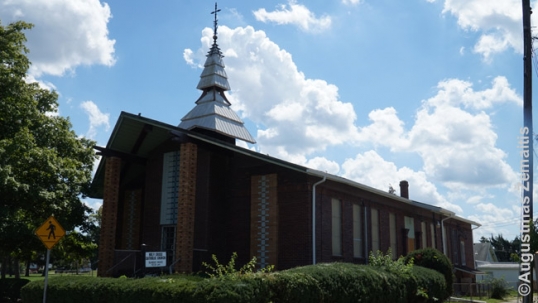
Dayton Holy Cross Lithuanian church
The side windows are each based on a Lithuanian chapel-post (koplystulpis), a traditional wooden religious post that is considered part of the UNESCO-inscribed Lithuanian cross-crafting tradition. The stained glass windows behind the altar represent the Hill of Crosses near Šiauliai, at the time suffering the Soviet attempts of demolition. The side-altars are made of traditional Lithuanian woodcarving, crowned with sun-crosses. Even small details, such as the church main door, were not missed: they are now covered in Columns of Gediminas.
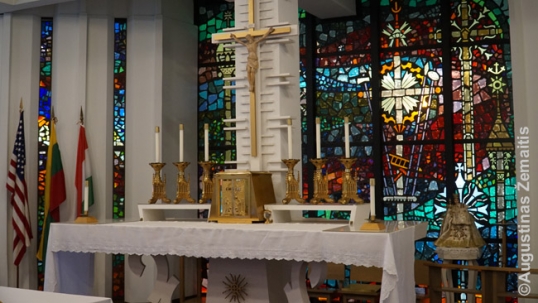
Altar of the Dayton Holy Cross Lithuanian church

Dayton Lithuanian church during a mass
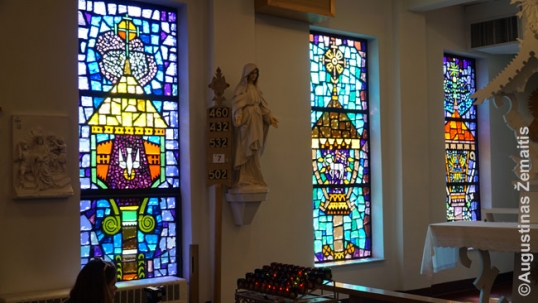
Stained-glass windows of the Dayton Lithuanian church

Columns of Gediminas on the Dayton Lithuanian chruch entrance

Interior of Dayton Holy Cross Lithuanian church with the side-altar in-sight
Like many Lithuanian-American churches, the Dayton one also has the lower floor of size equal to the upper floor main hall where community events take place, one of the major ones being the Kūčios (Christmas Eve dinner). There are many ethnic details, including a pretty hand-crafted wooden Lithuanian coat of arms (with an inscription "Let Lithuania live"), created by Antanas Lukoševičius in 1914, making it older than the Republic of Lithuania. There are other ethnic woodcarvings there as well, many of them made by the prolific local Lithuanian dievdirbys ("Godmaker") George A. Mikalauskas.
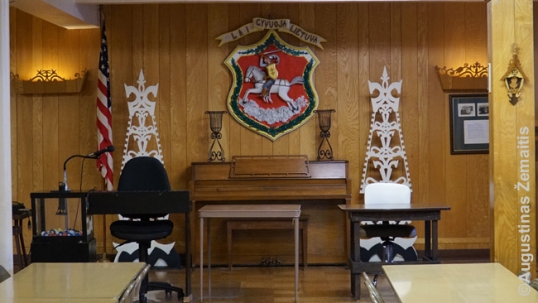
First floor of the Dayton Holy Cross church with the 1914 coat of arms
Outside the church stands a massive Shrine of Three Crosses that has been dedicated in 1964 to the Martyrs of Lithuania: hundreds of thousands of Lithuanians who had perished in the Soviet Genocide or were expelled from Lithuania, many of them for their religious beliefs or ethnic consciousness. The shrine also symbolically imitates the Three Crosses monument in downtown Vilnius, which had been destroyed at the time (with Lithuania independent, it has been since rebuilt). The original Three Crosses of Vilnius are, however, made of concrete, while the Dayton Three Crosses are made of the more traditional wood. Also, the crosses of Vilnius are identical, whereas each of the Dayton three crosses has different symbolism. The left cross is made in a style of the Vilnius region and the Our Lady of Gate of Dawn (Our Lady of Vilnius) painting motif adorns its center. The central cross represents Central Lithuania and its center has Rūpintojėlis, a traditional Lithuanian symbol of a sad Jesus, while its bark has an image of St. Casimir, Lithuania's patron saint. The third cross has motifs of Dzūkija (south Lithuania), with Our Lady of Šiluva (the first church-recognized Maryan vision of Europe) in the center on one side and Our Sorrowful Mother on the other side (Our Sorrowful Mother is a popular folk religious motif).

Three crosses shrine at the Dayton Lithuanian church
Church grounds also has a St. John shrine (1967) with Lithuanian sponsors listed and a Lithuanian flag constantly waving together with the American one. Inside there is also a Lithuanian flag, Hungarian flag, and Polish flag - as Hungarian and Polish churches have been closed, Lithuanians have accepted them into their own church.

St. John shrine at Dayton
The street next to the church is named "Rita St."; according to the locals, it is named after a Lithuanian although so far it remains unclear who that Lithuanian was or why the street was named so.
Old North Dayton neighborhood where the church is located was historically inhabited by immigrants who clung around their churches. On the entrance to the area near the bridge stand multiple memorials. The flags of the main immigrant ethnicities are constantly waving, among them the Lithuanian flag. There is also a mural of immigrants that also incorporates the Lithuanian flag. Other flags are American, Polish, Hungarian, Czech, Irish, Turkish, and German.

Memorial with the flags in Old North Dayton
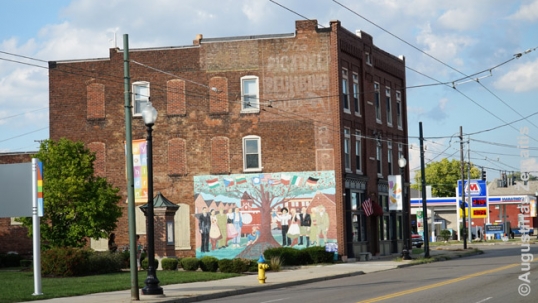
Building with a mural at Old North Dayton

International mural at Old North Dayton
Old North Dayton also had a Lithuanian Club. However, it has been sold to Czechs and Slovaks in 1999 and no details of Lithuanian history remain (now it is a Czechoslovak Club).

Former Lithuanian club of Old North Dayton
There is also a surviving Lithuanian restaurant called "Amber Rose" as it was established by Ambrose (originally Ambrazaitis) family, Lithuanian descendents, in 1990. The restaurant has stained glass windows that represent a Lithuanian folk song "Išėjo tėvelis į mišką" ("The father went to the forest"). While the restaurant was sold to non-Lithuanians, it still keeps the Lithuanian dishes in the menu, as well as images of the original owners in the interior.
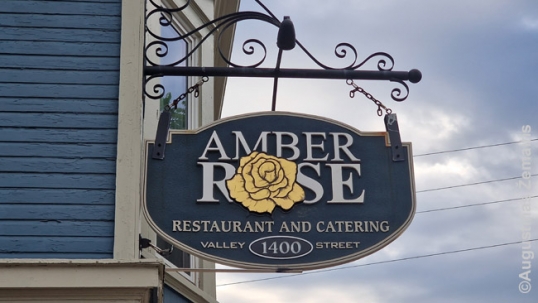
Amber Rose sign
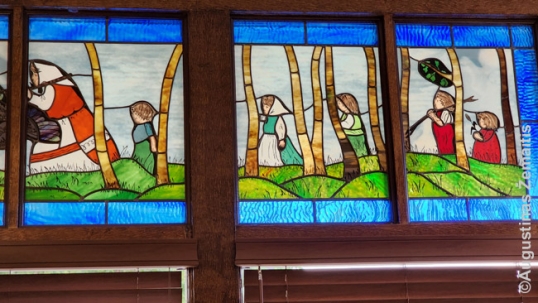
Part of the stained glass window representing a Lithuanian folk song
Among "Amber Rose" its "Lithuanian dishes" there is turtle soup. This dish is unknown in Lithuania and has been popularized already after the Dayton Lithuanians migrated to the USA. As locals have explained, it happened in World War 2 years when the meat was heavily rationed but no restrictions on turtles remained. To this day, "Lithuanian turtle soup" is also served during the Lithuanian festivals.
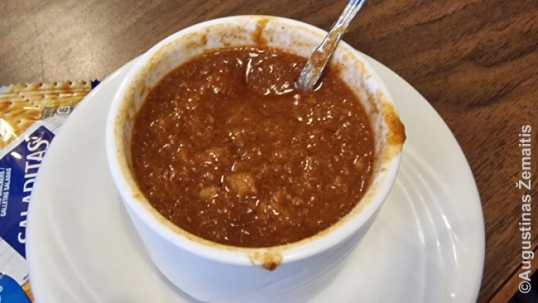
Lithuanian turtle soup
The map
All the Lithuanian locations, described in this article, are marked on this interactive map, made by the "Destination Lithuanian America" expedition (click the link):




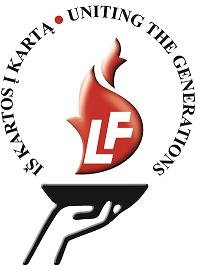

January 20th, 2019 - 21:08
Hello, I am looking for Lithuanian language lessons. Can you recommend someone?
January 23rd, 2019 - 23:27
I thought it was wonderful sharing our Lithuanian church with all who read this article. The only thing missing, in my opinion, is sharing our St. Casimir’s side alter with everyone. The Knights of Lithuania hold it annual devotion to St. Casimir each year on the Sunday closest to March 4th.
November 14th, 2021 - 03:19
My dad’s family all attended Holy Cross Church
January 31st, 2019 - 04:58
I loved your item about Dayton, Ohio. I lived there many years ago.
October 27th, 2019 - 22:40
Excellent communication about Dayton!
November 10th, 2019 - 19:21
Thank you
June 27th, 2021 - 14:05
Is Amberose Restaurant open?If anyone knows, thanks for sharing!
July 4th, 2021 - 03:30
I believe it is open. This is their Facebook: https://www.facebook.com/AmberRoseDayton/